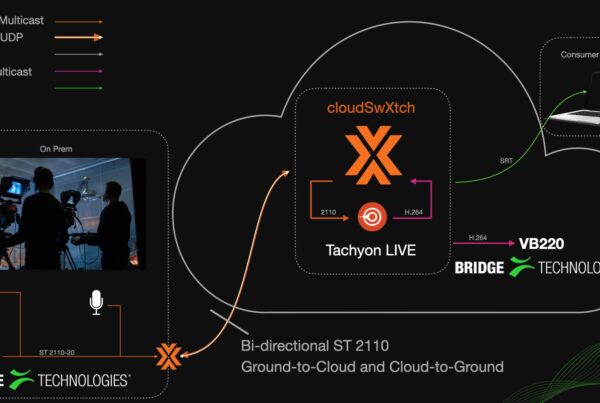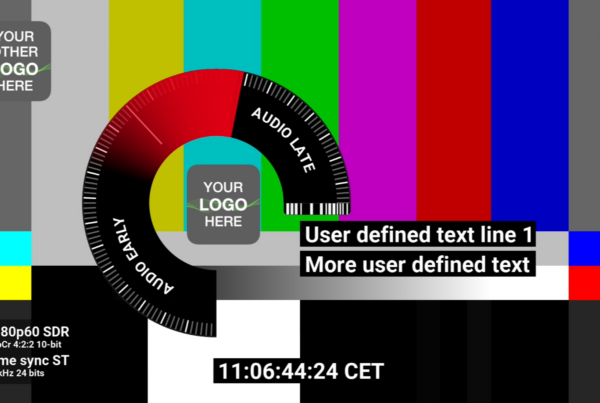We’re not quite One World yet
Whilst general talk about the rise of IP and OTT can make it seem like the global broadcast market is already fully mature in terms of internet-based services, there is still some ground to be covered in terms of adoption, with significant variations across geographical markets. These geographical variations often come as a surprise to those who assume that IP-driven broadcast must inevitably lead to a fully globalized and homogenized approach, with little-to-no difference in process or operational structure, be that in production, ingest, playout or distribution.
But the reality is different, and understanding the specific factors which impact a national broadcast market’s own approach to IP-uptake is thus crucial for stakeholders of all kinds, shaping the technological decisions they make as they move towards IP adoption.
Italy’s example
 The Italian market presents an interesting case study on exactly this idea. Estimates vary, but with a turnover of €8.5 billion in 2021, the Italian broadcasting (TV and Radio) sector represents a significant playing field. However, whilst once dominated by three key players, a gradual move into internet-based delivery – both IP and OTT – has resulted in an increasingly fragmented market, with an estimated 483 competitors in the field of Italian sports broadcast alone. Combined with the fact that Italian users are – in general – less digitally inclined than many of their European counterparts, the Italian broadcast sector shows fragmentation of resources and a slow investment in IP infrastructure.
The Italian market presents an interesting case study on exactly this idea. Estimates vary, but with a turnover of €8.5 billion in 2021, the Italian broadcasting (TV and Radio) sector represents a significant playing field. However, whilst once dominated by three key players, a gradual move into internet-based delivery – both IP and OTT – has resulted in an increasingly fragmented market, with an estimated 483 competitors in the field of Italian sports broadcast alone. Combined with the fact that Italian users are – in general – less digitally inclined than many of their European counterparts, the Italian broadcast sector shows fragmentation of resources and a slow investment in IP infrastructure.
Tackling fragmentation and under investment with pooled resources
Breaking the loop will require national broadcasters to find a way to innovate and manage their networks more effectively and efficiently, lest they become overpowered by the larger global players with near unlimited resources – something that would fundamentally alter the character of the Italian market and potentially deprive it of its important cultural dimension: local programming, regional sport, and other Italy-specific broadcast. Ironically, maintaining the individual character of Italian TV will require broadcasters to adopt a more global mindset, leveraging elements of the ‘Global Value Chain’ where the public internet becomes – in essence – a holistic, pooled resource, offering greater efficiency and economies-of-scale than various individual users investing in multiple, duplicate and thus necessarily smaller-scale private resources.
The rise of the Cloud
Previously, such a varied and complex undertaking would have called for huge equipment and infrastructure investment, closing off smaller players from meeting the quality of provision achieved by global incumbents. Now though, with the rise of Cloud computing, broadcasters are being granted access to highly scalable aggregation, control, and monitoring solutions – giving even small streaming services the ability to provide the highest quality of service and experience to their viewers.
Sencore presents one such option. Their Centra solution – developed to collect, collate, convert, aggregate, distribute and monitor broadcast data – gives an end-to-end overview of data flow. Capable of converting RIST, SRT, Zixi, HLS and MPEG over IP protocols as required, it results in a lower burden on shared public networks, meaning lower OpEx, higher reliability, easier deployment, and higher operational flexibility for broadcasters.
On top of this though, it also engages in a constant assessment of network metrics and latency, allowing optimization of transport according to resources and need. Asset and device management are also automated, allowing for users to determine at-a-glance the location, software version, license status and health of their various assets, with ‘at-a-click’ ability to manage and upgrade these elements. Monitoring and analysis capabilities also facilitate automated flagging of a range of error types, notifying users automatically and providing a streamlined path to rectification.
Combining the scale of public delivery with the control of private
In essence, Centra allows broadcasters of all shapes and sizes access to a common, pooled broadcast delivery resource – the public internet – something far bigger in scope and reach than any private network they could each develop independently. With Centra though, broadcasters can achieve the same levels of control, insight, and sleek delivery they would maintain if they were operating over a private network – largely eliminating concerns about peak flow traffic and its impact on delivery latency.
Moreover, because it is available either as a Cloud-based or On-Prem solution, it gives broadcasters more choice; offering either scalability and flexibility, or the ability to own, manage and operate the tools of their own success directly. In this way then, it is tools such as Sencore’s Centra which will be crucial in giving broadcasters choice and the ability to accommodate the very specific market conditions and operational contexts which still impact individual and collective national broadcasters, even in an IP age.
For the Italian case, this could mean overcoming the infrastructure under investment that has gone hand-in-hand with market fragmentation, allowing individual small-scale operators the ability to stabilize and then flourish, and ultimately provide Italian audiences with improved choice and experience.





